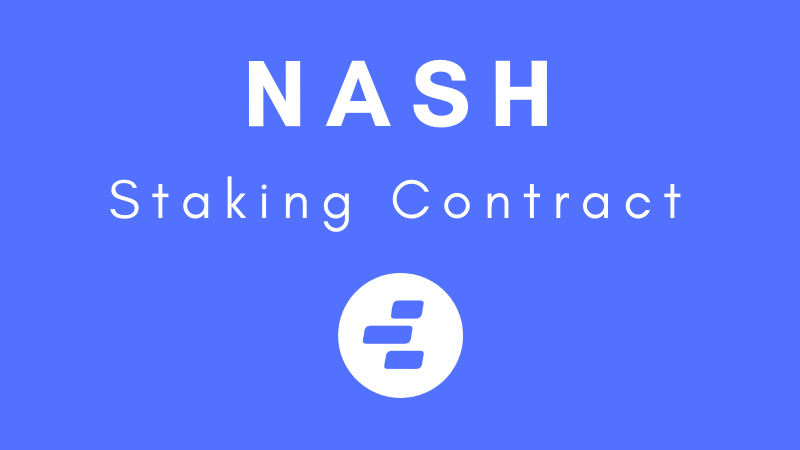
Decentralized financial service platform Nash has finalized and released the NEX token staking contract. The smart contract allows NEX (Nash Exchange) token holders to stake their tokens in return for a portion of fees generated by the exchange. The team has made the contract open-source to preserve transparency and allow users to personally audit the code.
Contract Overview
Nash has provided an overview of the staking contract, outlining the details of the implementation. To stake tokens, users call the approve method on the staking contract, which allows the contract to transfer the designated amount of tokens from the user’s wallet. Nash will provide a simple interface to improve the accessibility of the staking process.
Stakers designate a duration between 1 and 24 months, with stakes being unretrievable until the selected duration has passed. The amount staked must be an integer, which “simplifies the distribution of exchange fees” by avoiding the need for the contract to deal with decimals.
Once the stake period has expired, the method completeStake can be called by anyone, allowing both the user or the exchange to return staked tokens back to the original address. The return address cannot be modified, so stakes will always be distributed back to the original staking address.
It should be noted that NEX holders are required to pass KYC before becoming eligible to stake tokens and receive their share of fees. Passing KYC will add the user’s address to a whitelist, allowing them to call the approve method in order to stake tokens.
The contract, written in Python, can be viewed here.
Claiming Fees
The Nash whitepaper outlines the fee claiming system for NEX stakers. Users that commit to longer stake periods receive a larger proportion of fees. This amount scales linearly between 25% fee share for a 1-month stake, up to 75% fee share for a 24-month stake.
Users will receive fees from all trading pairs, which they can claim in one preferred asset type. Nash exchange will automatically handle the conversion “using its trade features and corresponding fee structure.”
Section 4.2.1 of the whitepaper outlines a claim example. If a user owns 1,000 NEX and stakes for the full 24-month period, and the exchange has generated fees equivalent to US $100,000,000, the claim is calculated as:
$100,000,000 * (1,000/50,000,000) * 0.75 = $1,500
The calculation and distribution of fee rewards are not implemented in the contract, and will instead be managed by the Nash exchange matching engine.








About The Author: Brett Rhodes
Brett is a blockchain enthusiast and freelance writer who originally began producing content for the gaming & eSports industries. Now he spends most of his time contributing in the Neo ecosystem.
More posts by Brett Rhodes